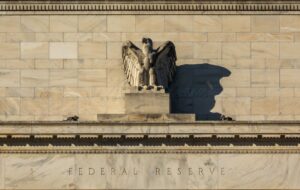
When asked last month at the European Central Bank’s annual forum in Portugal whether the Fed would have cut interest rates if not for the tariffs, Fed Chair Jerome Powell affirmed that was indeed the case. He explained that the Fed chose to pause its rate-cutting cycle in light of the tariffs’ magnitude, opting to wait and see how the trade-policy uncertainty would affect the economy before adjusting policy further.
While such an approach may seem prudent amid the uncertainty surrounding trade policy, it reflects a fundamental misunderstanding of how monetary policy works. If tariffs end up reducing productivity, they will also depress the neutral rate of interest — that is, the rate consistent with full employment and stable prices. And if the neutral rate falls while the Fed holds its policy rate steady, the central bank has, in effect, tightened monetary policy despite taking no overt action.
With the Federal Open Market Committee (FOMC) expected to hold rates steady at today’s meeting, it’s worth asking why the Fed cannot afford a wait-and-see approach — and why it shouldn’t attempt to offset tariff-induced price pressures in the first place.
The neutral interest rate depends in part on investment demand, which itself is closely tied to productivity growth. When firms expect productivity to rise, they’re more willing to invest in new capital projects, raising the demand for loanable funds and, with it, the neutral rate. But when productivity prospects dim — as they often do in the face of trade uncertainty: higher input costs, reduced access to more efficient foreign suppliers, and resource misallocation driven by protectionist policies — investment demand falls, dragging the neutral rate down with it.
In order for monetary policy to remain on track, the Fed must adjust its policy rate when the neutral rate changes. For example, if tariffs are pulling the neutral rate lower, then the appropriate course of action is for the Fed to cut its policy rate. By contrast, if the Fed holds the policy rate constant, as it has since December, and the neutral rate is indeed falling, then the Fed is passively tightening monetary policy. In short, the Fed’s wait-and-see approach is anything but.
To see why, suppose the neutral rate falls from 4 percent to 2 percent but the Fed holds its policy rate constant at 4 percent. In that case, the real — that is, inflation-adjusted — interest rate will exceed the neutral rate, making monetary policy contractionary. This occurs even though the Fed has, in some sense, “done nothing.” But holding rates steady amid a falling neutral rate is a policy choice, and one with real consequences — namely, slower growth.
One way to assess whether monetary policy is appropriately calibrated is to compare the current policy rate to a benchmark of where it ought to be. A commonly used benchmark is the Taylor Rule, named after economist John Taylor. The rule incorporates the current inflation rate, the Fed’s inflation target, the output gap, and an estimate of the neutral interest rate to generate a recommended policy rate.
The Federal Reserve Bank of Atlanta publishes a range of Taylor Rule estimates that incorporate different measures of inflation, output gaps, and neutral interest rates. Notably, two of the three versions currently suggest that the federal funds rate is too high — implying that monetary policy is contractionary, even though the Fed hasn’t raised rates in several months.
To be sure, estimating the neutral rate is notoriously difficult, since it is not directly observable. But the weight of evidence suggests that, regardless of Powell’s intentions, the Fed’s inaction is having a contractionary effect.
At a more fundamental level, the Fed should not be responding to tariffs, even if they push prices higher. The reason is straightforward: while the Fed can influence the demand side of the economy, it has little control over the supply side — where tariffs primarily operate. Responding to supply-driven price fluctuations risks compounding the problem rather than solving it, especially if tighter policy suppresses demand in an already constrained economy.
The Federal Open Market Committee will likely hold its policy rate steady at today’s meeting. But if trade policy is indeed exerting a drag on productivity and investment, then standing pat will amount to passive tightening. In short, when the neutral rate falls, doing nothing is not a neutral act — it’s a contractionary one.
